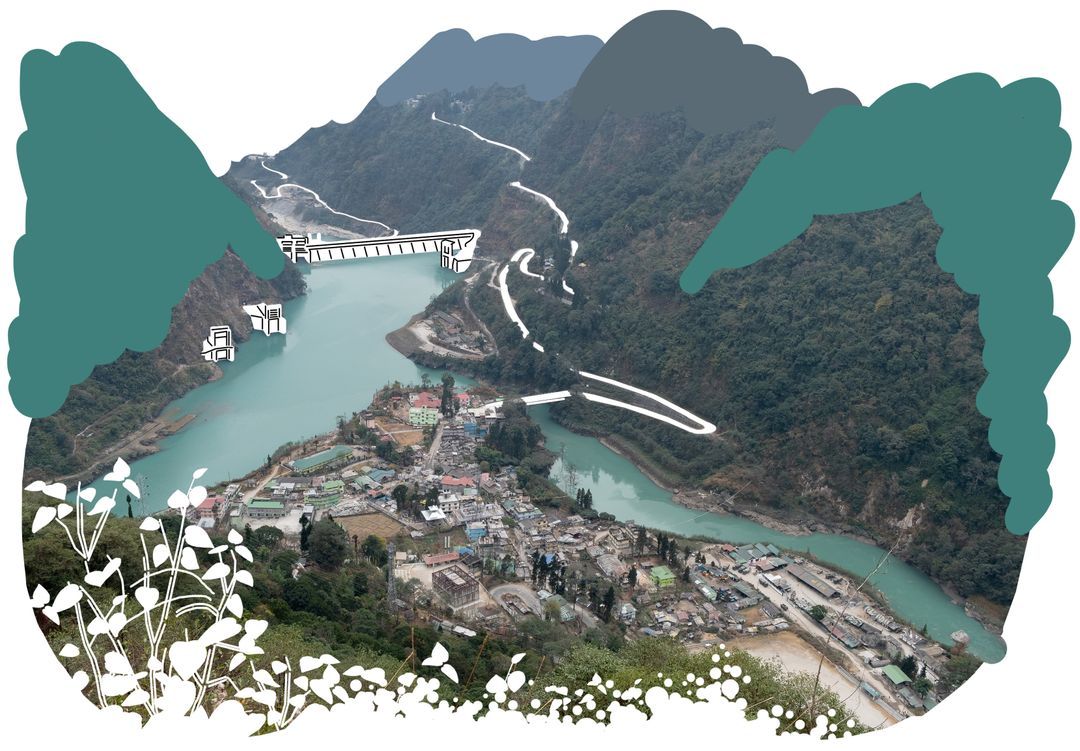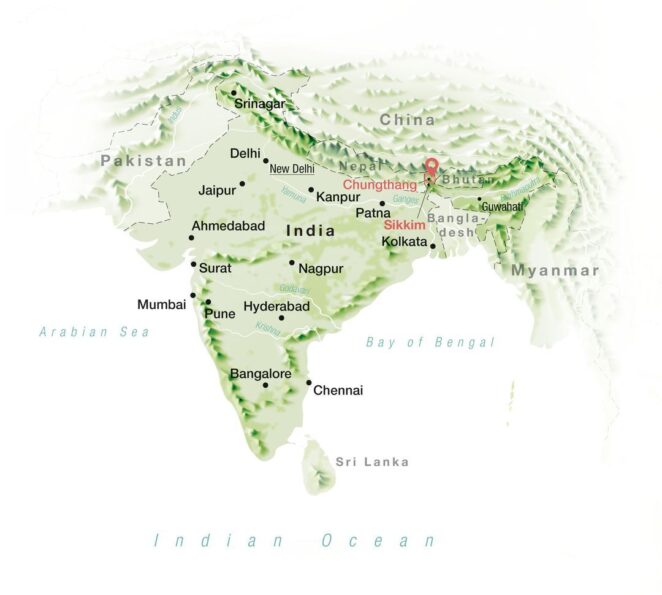Solution Story: Reducing the risk from Himalayan tsunamis – How global cooperation is helping mountain regions meet the growing threat from glacial lake outburst floods

Summary
Chorabari Tal is a pool of rain- and meltwater perched high in the Indian Himalaya. Long popular with Hindu pilgrims, it has been even more of a draw since 1948, when some of Mahatma Ghandi’s ashes were immersed in its blue waters.
But in 2013, the swollen lake became a source of death and devastation when the loose surrounding glacial moraine could no longer contain it. Massive volumes of mud, rocks and water engulfed the village of Kedarnath below, killing hundreds.
Mountain people have always faced the threat of natural disasters. Landslides, avalanches and floods are familiar dangers in many high-altitude regions around the globe. But climate change is altering – and magnifying – the threats, and more and more people and infrastructure projects are standing in harm’s way.
Kedarnath fell victim to what experts call a glacial lake outburst flood, or GLOF. Increasing temperatures, melting ice and changing patterns of rain- and snowfall are swelling and destabilizing lakes in mountains from the Andes to the Alps. The sudden release of this water can destroy lives and livelihoods in communities hundreds of kilometers downstream.
Consequently, managing the risk of GLOFs is part of growing efforts to help mountain regions adapt to climate change. A project in Sikkim state, another part of India’s Himalayan arc, is a trailblazing example of how scientific knowledge and better-informed policy is protecting people on the ground.
Support from the Swiss Agency for Development and Cooperation (SDC) has enabled experts from around the world to draw up best practice guidance for the assessment of glacier and permafrost hazards in mountain regions. Published in 2017, the guidance combines future-oriented, scenario-based hazard assessment and mapping with physically based numerical models.
This Solution Story describes how India’s National Disaster Management Authority tapped this global document to develop national guidelines on managing the risks related to GLOFs tailored to the conditions and needs of its mountain regions. It goes on to describe how these guidelines are being tested in Sikkim.
Read the Solution Story “Reducing the risk from Himalayan tsunamis: How global cooperation is helping mountain regions meet the growing threat from glacial lake outburst floods” >

Read the guidance document
Read the guidance document behind this Solution Story: Assessment of Glacier and Permafrost Hazards in Mountain Regions: Technical Guidance Document
About Solution Stories
Solution Stories aim to bring some of the solutions shared in the Adaptation at Altitude Solutions Portal to life and put stakeholders and beneficiaries at the centre of reflections on the successes of the different solutions. Linked Solution Stories will be highlighted on their respective solutions in the Adaptation at Altitude Solutions Portal.

Comments
There is no content